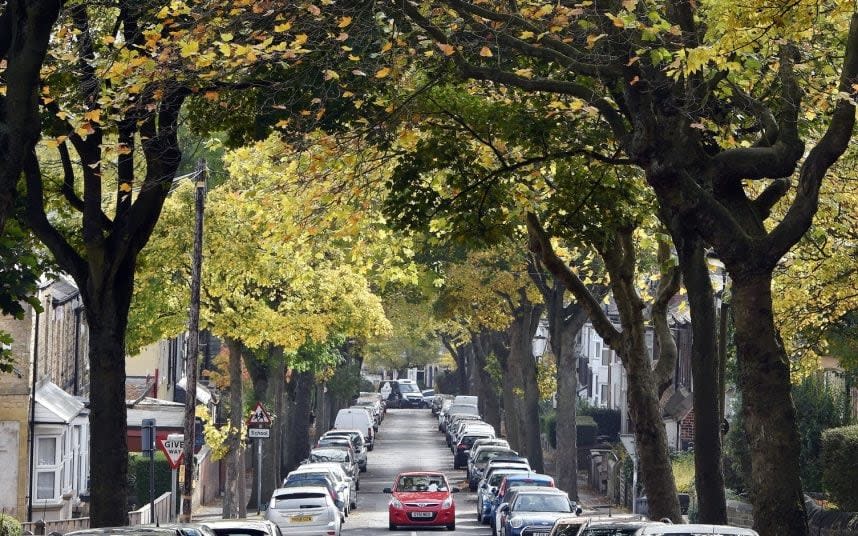Line streets with trees to prevent serious asthma attacks, say scientists

Asthma hospital admissions could be cut dramatically by lining streets with trees, the largest ever study has found. Researchers from the University of Exeter's medical school studied the impact of urban greenery on the respiratory condition and say the results suggest planting trees could help reduce the dangerous effects of traffic fumes.
However large areas of grassed gardens or parkland could make asthma worse, the findings suggest, because grass pollen merges with pollution - triggering a condition known as 'greyfever.'
Asthma affects about five million people in Britain, costs the NHS £1 billion a year and causes around 1,000 deaths annually.
Pollution is known to exacerbate asthma, but researchers found that even in the most-polluted areas, a high density of trees led to fewer A&E admissions than in less-polluted neighbourhoods with fewer trees.
The findings hold true even though tree pollen can often trigger asthma, suggesting the pollution-absorbing effect is greater than the allergenic impact, particularly when pollution is high.
The researchers concluded, on balance, trees did "significantly more good than harm," with every extra 300 trees per square kilometre associated with around 50 fewer emergency asthma cases per 100,000 residents over a 15-year period.

"Greenspace and gardens were associated with reductions in asthma hospitalisation at lower pollutant levels, but not in the most polluted urban areas. With trees it was the other way round, " said study leader Dr Ian Alcock.
"It may be that grass pollens become more allergenic when combined with air pollutants so that the benefits of greenspace diminish as pollution increases.
"In contrast, trees can effectively remove pollutants from the air, and this may explain why they appear to be most beneficial where concentrations are high."
The study, published in the Environmental International journal, looked at more than 650,000 serious asthma attacks over 15-years in England.
By comparing 26,000 urban neighbourhoods, the researchers found a link between areas highly populated by trees and lower rates of emergency visits to hospital for asthma.
While tree-cover was associated with benefiting asthma sufferers in highly polluted areas, the findings suggested sufferers in low-pollution areas may not benefit as much.

That's because in areas of low pollution foliage can retain build-ups of irritating pollutants that would otherwise have been dispersed by wind.
Met Office senior climate impacts scientist and study co-author Dr Rachel McInnes said the research showing different effects depending on the type of vegetation was important for public health and urban planning policies.
"We also know that the interaction between pollen and air pollution, and the effect on health and asthma is highly complex and this study confirms that more research is required in this area," she said.
The study also noted that asthma was strongly linked to socio-economic deprivation, with the researchers controlling for that factor.

 Yahoo News
Yahoo News 